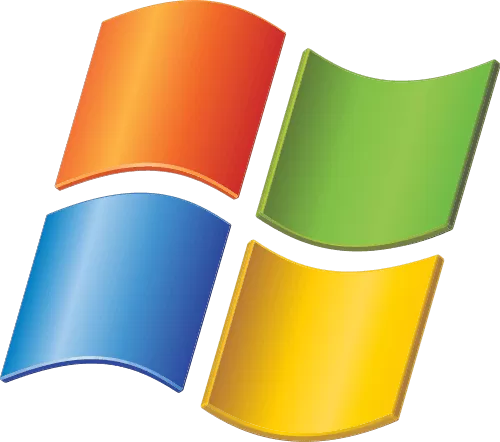
- Microsoft Hotfix For Windows 7 32 Bit
- Wcf Hotfix For Microsoft Windows 7
- Windows Hotfix Downloader Windows 7
- Apr 17, 2017 Where as I have a TPM 2.x laptop running windows 7 where hotfix KB2920188 is installed to support TPM 2.x and trying to store against the new attribute (that exists in server 2012) in Server 2008 that does not exist.
- Hotfix for Microsoft Windows 7 (32-bit, 64-bit) - Notebook. SHOP SUPPORT. PC Data Center Mobile: Lenovo Mobile: Motorola Smart Service Parts COMMUNITY.
- Microsoft Hotfix for Installing Windows 7 on NVMe - ThinkCentre. SHOP SUPPORT. PC Data Center Mobile: Lenovo Mobile: Motorola Smart Service Parts COMMUNITY.
Microsoft Hotfix for Installing Windows 7 on NVMe - ThinkCentre. SHOP SUPPORT. PC Data Center. Windows Support Center. I tried to install streets and trips on windows 7, and I have been doing this for over a month. On my second day I thought well it dont work here maybe it is the disk. I installed it on my windows Vista computer with no problem. I also installed it on my windows XP laptop, here again I had no problems.
The Get-Hotfix cmdlet gets hotfixes, or updates, that are installed on the local computer or specified remote computers. The updates can be installed by Windows Update, Microsoft Update, Windows Server Update Services, or manually installed.
-->Syntax
Description
The Get-Hotfix cmdlet gets hotfixes, or updates, that are installed on the local computer orspecified remote computers. The updates can be installed by Windows Update, Microsoft Update,Windows Server Update Services, or manually installed.
Examples
Example 1: Get all hotfixes on the local computer
The Get-Hotfix cmdlet gets all hotfixes installed on the local computer.
Example 2: Get hotfixes from multiple computers filtered by a string
The Get-Hotfix command uses parameters to get hotfixes installed on remote computers. The resultsare filtered by a specified description string.
Get-Hotfix filters the output with the Description parameter and the string Security thatincludes the asterisk (*) wildcard. The ComputerName parameter includes a comma-separatedstring of remote computer names. The Credential parameter specifies a user account that haspermission to access the remote computers and run commands.
Example 3: Verify if an update is installed and write computer names to a file
The commands in this example verify whether a particular update installed. If the update isn'tinstalled, the computer name is written to a text file.
The $A variable contains computer names that were obtained by Get-Content from a text file. Theobjects in $A are sent down the pipeline to ForEach-Object. An if statement uses theGet-Hotfix cmdlet with the Id parameter and a specific Id number for each computer name. If acomputer doesn't have the specified hotfix Id installed, the Add-Content cmdlet writes thecomputer name to a file.
Example 4: Get the most recent hotfix on the local computer
This example gets the most recent hotfix installed on a computer.
Get-Hotfix sends the objects down the pipeline to the Sort-Object cmdlet. Sort-Object sortsobjects by ascending order and uses the Property parameter to evaluate each InstalledOndate. The array notation [-1] selects the most recent installed hotfix.
Parameters
Specifies a remote computer. Type the NetBIOS name, an Internet Protocol (IP) address, or a fullyqualified domain name (FQDN) of a remote computer.
When the ComputerName parameter isn't specified, Get-Hotfix runs on the local computer.
The ComputerName parameter doesn't rely on Windows PowerShell remoting. If your computer isn'tconfigured to run remote commands, use the ComputerName parameter.
| Type: | String[] |
| Aliases: | CN, __Server, IPAddress |
| Position: | Named |
| Default value: | None |
| Accept pipeline input: | True (ByPropertyName) |
| Accept wildcard characters: | False |
Specifies a user account that has permission to access the computer and run commands. Type a username, such as User01, Domain01User01, or enter a PSCredential object, generated by theGet-Credential cmdlet. If you type a user name, you're prompted for a password.
When the Credential parameter isn't specified, Get-Hotfix uses the current user.
| Type: | PSCredential |
| Position: | Named |
| Default value: | None |
| Accept pipeline input: | False |
| Accept wildcard characters: | False |
Get-HotFix uses the Description parameter to specify hotfix types. Wildcards are permitted.
| Type: | String[] |
| Position: | Named |
| Default value: | None |
| Accept pipeline input: | False |
| Accept wildcard characters: | True |
Filters the Get-HotFix results for specific hotfix Ids. Wildcards aren't accepted.
| Type: | String[] |
| Aliases: | HFID |
| Position: | 0 |
| Default value: | None |
| Accept pipeline input: | False |
| Accept wildcard characters: | False |
Inputs
String
You can pipe one or more computer names to Get-HotFix.
Outputs
System.Management.ManagementObject#rootCIMV2Win32_QuickFixEngineering
Microsoft Hotfix For Windows 7 32 Bit
Get-HotFix returns objects that represent the hotfixes on the computer.

Notes
The Win32_QuickFixEngineeringWMI class representsa small system-wide update, commonly referred to as a quick-fix engineering (QFE) update, applied tothe current operating system. This class returns only the updates supplied by Component BasedServicing (CBS). These updates are not listed in the registry. Updates supplied by Microsoft WindowsInstaller (MSI) or the Windows Update site are not returned byWin32_QuickFixEngineering. For more information, see Win32_QuickFixEngineering class.
Wcf Hotfix For Microsoft Windows 7
The Get-HotFix output might vary on different operating systems.